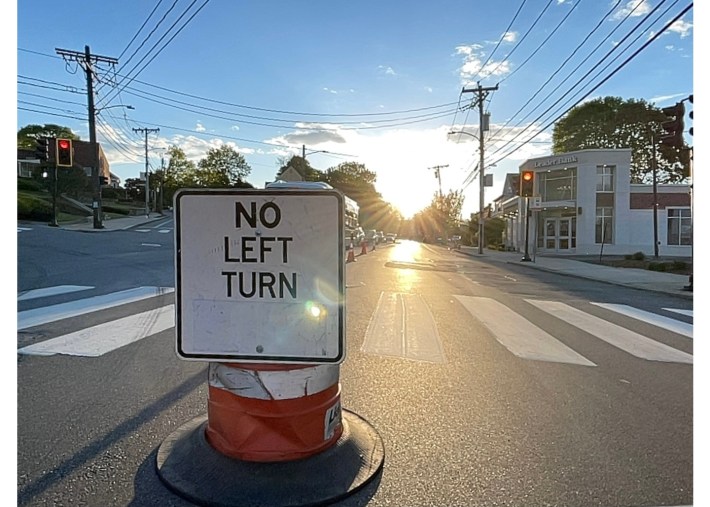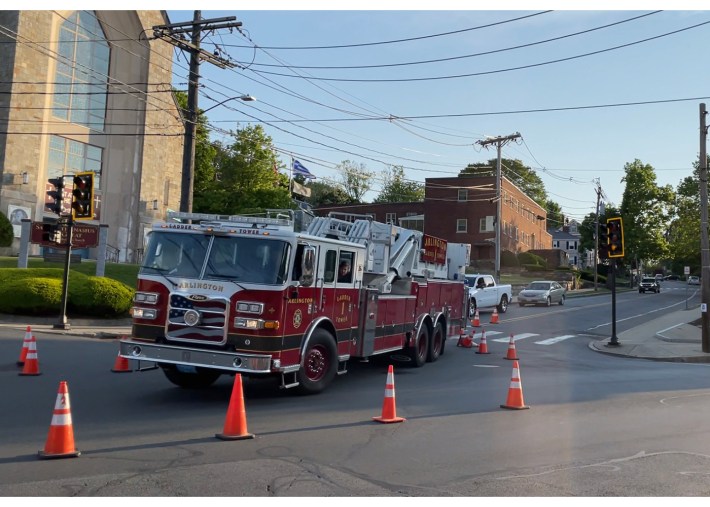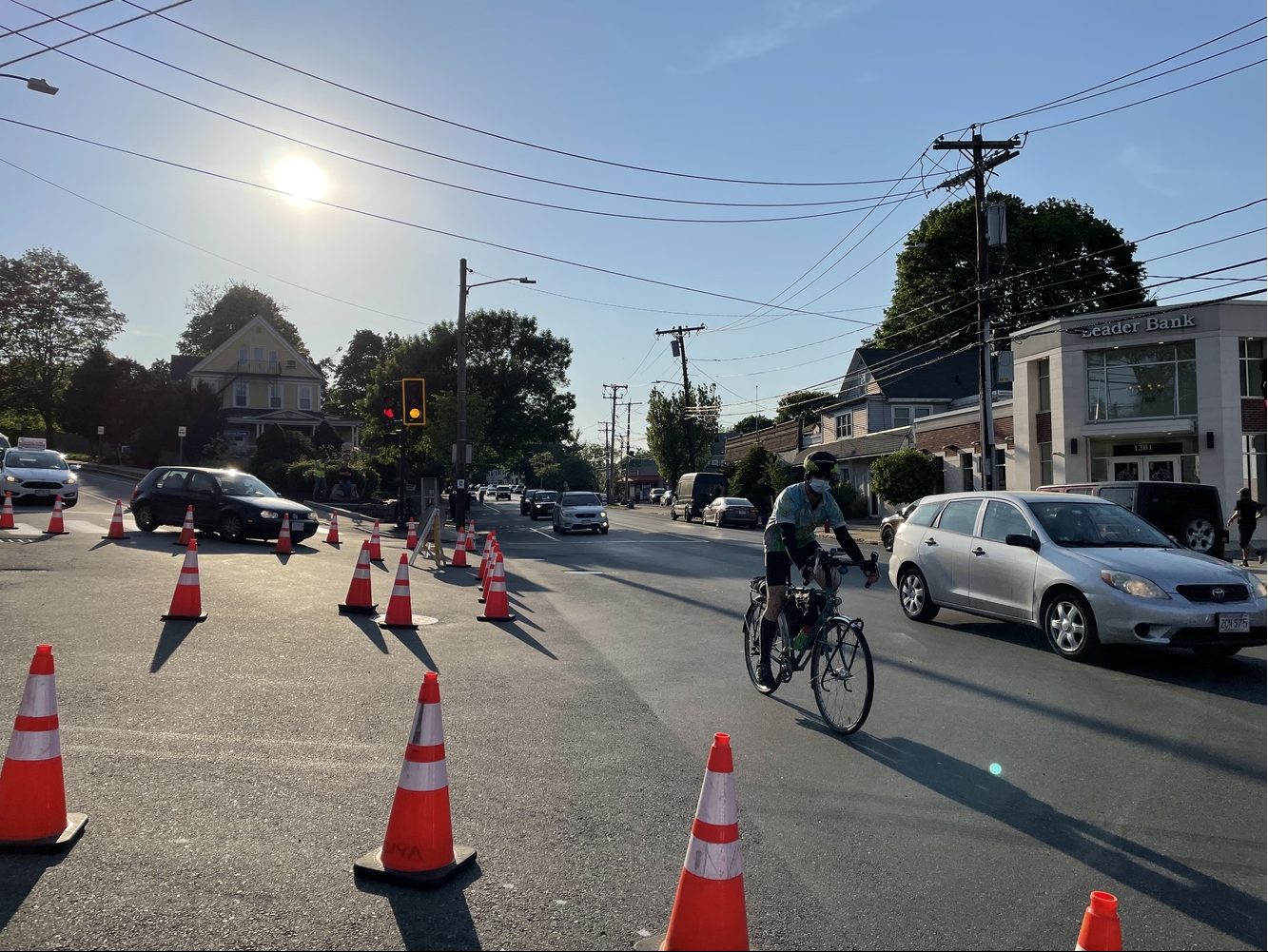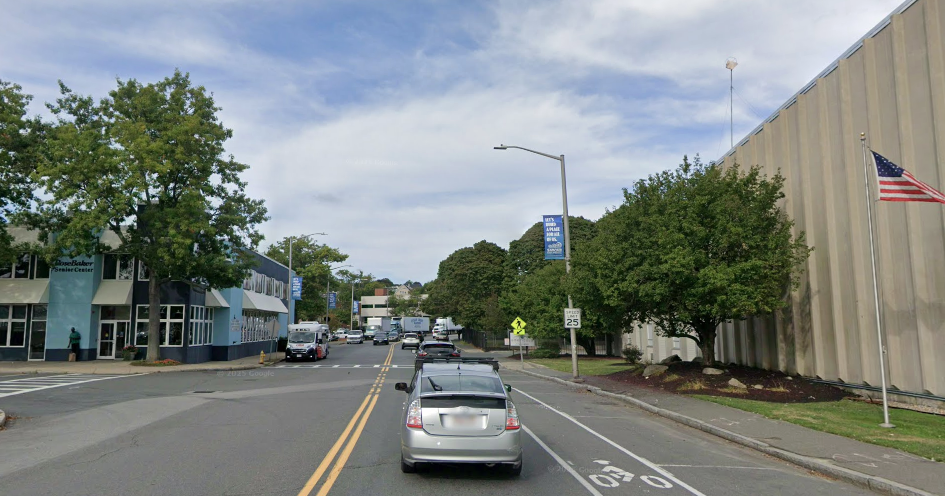Last year on May 5th, Charlie Proctor and his partner were riding on Massachusetts Avenue, towards their Somerville home, when a driver turned left towards Appleton Street and struck them with his vehicle.
Charlie was killed, and his partner Alison was injured. A month later, a similar crash occurred, when another driver turned left from Massachusetts Avenue and hit another bicyclist.
After these crashes, Arlington began looking into short-term and long-term solutions to make this fatal intersection safer, and more friendly to bicycles and pedestrians.
This month, Arlington is trying out short-term safety improvements. After last year’s crashes, Arlington quickly implemented a ban against left turns every afternoon, when glare from the setting sun limits visibility, from Massachusetts Avenue onto Appleton Street, a cut-through street that many drivers use to get to Route 2.

Unfortunately, the ban only solves one of the many problems at the intersection, and confuses drivers. Arlington wants something more practical to work full-time.
Green International, a Massachusetts-based engineering firm, has designed several short-term alternatives intended to improve safety at the intersection. The firm recently released refined designs that include buffered bicycle lanes and improved crosswalks:

These designs aim to slow traffic down, simplify the intersection, and improve bicycle and pedestrian facilities. Both alternatives would create a large expansion of the sidewalk on the south side of the intersection – a “curb extension” – to block high-speed turns through the intersection and provide shorter crossings for pedestrians.
To test their effectiveness, Arlington officials used traffic cones to try them out over the course of two days during the evening rush hour earlier this month. Additionally, Appleton Place was temporarily converted into a one-way street.
On the first day of the trial, vehicles were traveling at lower, safer speeds and had better visibility of all types of traffic on Massachusetts Avenue. Unfortunately, several drivers ran the red light during testing, possibly because they couldn’t see the traffic signals from the stop line.
If curb extensions were installed with permanent materials, the traffic signals would be adjusted to fit the new geometry. As for the other near-term solutions, Wayne Chouinard, Arlington’s Town Engineer from the Department of Public Works, said that the town would likely use flexible barriers, paint, and possibly sandbags.
On the second day of testing, the curb extensions remained in their previous positions; however, this time, left turns were permitted from Massachusetts Avenue onto Appleton Street.
Since left turns aren’t typically allowed here at this time of day, several drivers were hesitant to take it. Drivers who made the left turn slowed down much more than before the curb extensions were installed, and paid more attention. Unfortunately, they still didn’t have a great view of eastbound traffic.
While the extensions did slow down traffic as intended, there were still a few hiccups during the trial.
One issue was that multiple drivers on Appleton Street came down the wrong side of the street, to the left of the cones marking the temporary center line. While concerning, it is unlikely similar mistakes would occur after the final implementation, when the cones would be replaced with a painted yellow line.
There were also concerns about how large vehicles could traverse around the curb extensions.
To test the layout, a ladder fire truck drove through the intersection. The fire truck knocked over a few cones, but overall did very well. Arlington is also considering a heavy trucking ban for Appleton Street.

Arlington Design Review Committee member Anne DiNoto was watching the trial with the new curb extensions. She lives down the street from this intersection, and crosses it daily. She liked that the curb extensions shortened the crossing distance for pedestrians. She also thinks the curb extension decreased vehicle speeds. In the long term, Anne hopes that the area will be a safer place for neighbors to walk through. She also wants to transform this area into “a place where people would want to come out and gather.”
Unfortunately, more permanent changes at the intersection are moving slowly.
“We have to get input from many stakeholders,” says Wayne Chouinard, Arlington’s Town Engineer.
There’s still no official schedule for implementation, but near-term improvements could be installed before the end of 2021.
Longer-term solutions would likely involve new traffic signals and heavy construction work.
For updates, check this webpage for links to future meetings of the Design Review Committee.






